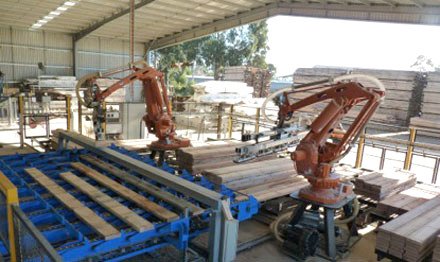
A new research program at Robert Gordon University (RGU) will focus on robotic fabrication of cross-laminated timber (CLT) joints. Researchers from the university’s Scott Sutherland School of Architecture & Built Environment will be working on the project with the Construction Scotland Innovation Centre (CSIC) and timber engineering firm Glulam Solution. The aim is to help address housing market issues in Scotland and further afield. Source: The Construction Index
Robotic, off-site fabrication will bring the benefits of industrialised production systems to construction, said the team.
Theo Dounas, learning excellence leader at RGU, said that the research project has the potential to significantly improve construction methods, helping to increase the quality and output while reducing costs and time.
“This proof-of-concept research project will look at process of designing a simple timber prototype house to address pressing market needs within Scotland and the UK,” he said. “The innovation lies with the integration of a house design prototype and its robotic fabrication out of complex CLT panels manufactured off-site. At the end of the project, we envision that the consumer, the house buyer, will be able to select various options from a website and then we will be able to produce all components based on consumer demand.”
He added that it is hoped that the initial project will be followed by a range of ideas and solutions, from logistics, to design, testing CLT joints and the formation of insulated composite panels.
“While this particular solution is tightly integrated with one design product, it is likely to be relevant to other building projects,” he said. “We plan to develop a family of houses and other buildings using the technology developed through the project.”
Glulam Solutions managing director Syd Birnie added: “This is our very first project linking an academic concept to our commercial approach and it’s an exciting prospect getting the chance to use CSIC’s robotic facilities. We are crying out for more innovation in the construction industry and we hope this is the first of many real advancements for timber engineered building solutions.”





